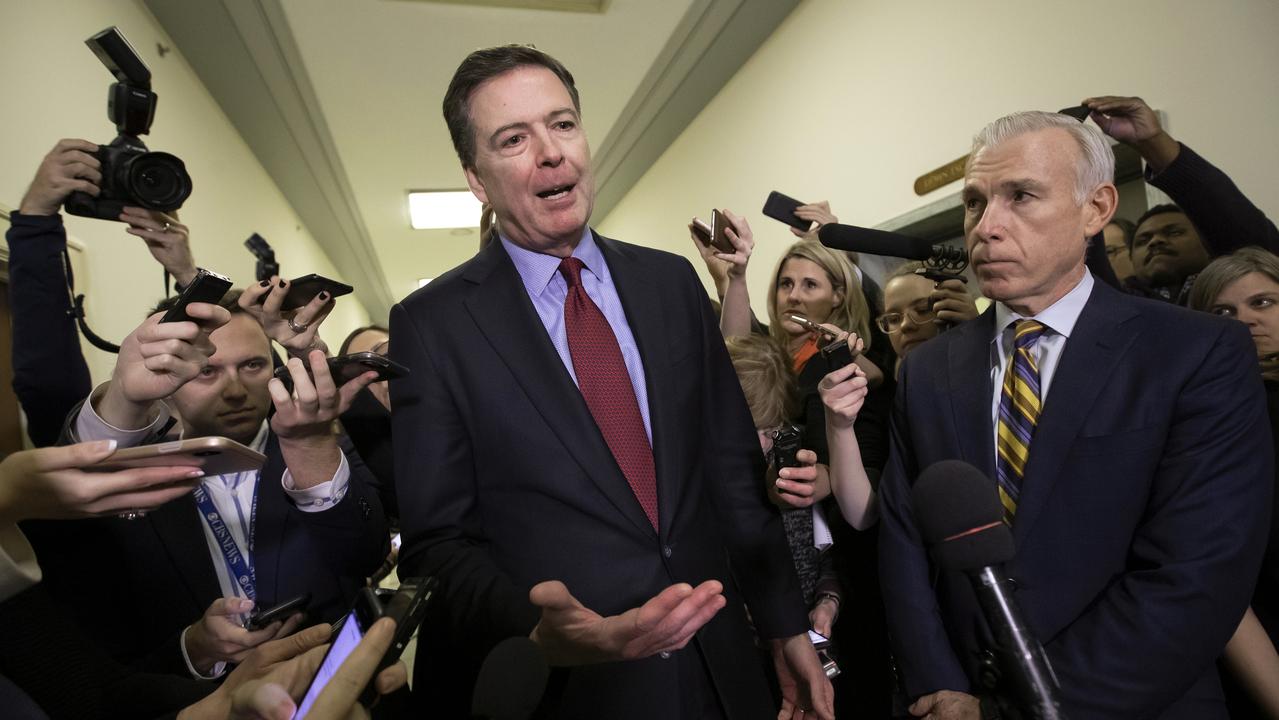Jacinda Ardern after 100 days: NZ takes stock of surprise PM
New Zealand’s Jacinda Ardern has continued to surprise during her first 100 days, not least by saying she is expecting a child.

You have to hand it to Jacinda Ardern. When she marks her 100th day in office tomorrow she could say without fear of contradiction that New Zealand has never before had a prime minister quite like her.
The toothy 37-year-old has come so far so fast, it’s easy to forget where she was six months ago: deputy to the leader of a down-and-out Labour opposition that was on track to notch up a fourth successive election defeat at the hands of a confident and successful conservative prime minister.
Ardern defied the opinion polls — her party was on a disastrous 24 per cent when she stepped up to the plate last August — as well as the pundits who predicted Labour had finished too far behind the governing National Party to stand a chance in the horsetrading that followed the inconclusive election result on September 23.
But here she is, heading an unlikely and seemingly unwieldy alliance between Labour and two minor parties that loathe each other, the unabashed populists of Winston Peters’s New Zealand First and the Greens.

So far she has kept a lid on the tensions to sign on to the revised Trans-Pacific Partnership free trade pact that Australia champions — no mean achievement when all three parties, hers especially, were hostile to the deal in its original form.
If Jacinda-mania wasn’t arresting enough during the NZ election, it’s gone to another level since she announced she was pregnant with her first child. Pity Bill English, who has stayed on as Opposition Leader. He performed strongly both in office and at the hustings — the National Party vote was 44 per cent, not far below the benchmark set by his predecessor and three-time election winner John Key. In the end, English secured a plurality of 56 seats, achingly close to a majority in the 120-seat parliament.
But he’s hardly able to get a word in with a media that’s gone gaga over the First Mum-to-be and her live-in partner, TV presenter Clarke Gayford. Ardern’s press team has been inundated with interview requests from around the world: CNN’s star presenter Christiane Amanpour has had her on, and she participated in Al Gore’s 24-hour climate change show. The New York Times, The Washington Post, Canadian TV and German public radio are clamouring for access. “Never seen anything like it,” says chief press secretary Mike Jaspers.
Now that the stardust has begun to settle, the traditional 100-day test is allowing New Zealanders to take the measure of their new Prime Minister and perhaps the biggest challenge confronting her — living up to the sky-high expectations she has created.
Kevin Rudd fell at this hurdle after he knocked over John Howard in Australia in 2007, a change of government that resonates across the ditch. It’s easy to see why. Like Kevin 07, Ardern was up against a well-performed right-of-centre government that had the economy motoring: New Zealand under Key bounced back strongly from the global financial crisis and the devastating 2011 Christchurch earthquake, while English, as finance minister and then PM, could point to boom-level GDP growth and a budget in robust surplus, in stark contrast to the red ink permeating Australia’s national accounts.
If Rudd over-promised and underachieved — think his fatal decision to ditch climate change mitigation, “the great moral challenge of our generation” — Ardern has not shied away from the big issues. On Wednesday she said the government would reduce the incidence of child poverty by half over 10 years, based on cutting the proportion of children living in low-income households (from 20 per cent to 10 per cent) and the number of those living in material hardship (from 150,000 to 80,000). “This is what most of us would expect from a country like ours,” she said.
It’s hard to argue with that. But the devil is always in the detail, and to date it’s been notably lacking. Alleviating child poverty was one of Ardern’s core election commitments and she says her first 100 days have been about laying the policy foundation to deliver. The catch is that the NZ Treasury Department admitted it had bungled its projections on how many children might actually be helped. For now the how and — most critically — the cost of Labour’s plan remain unknown.

She will lift the minimum wage and is moving on industrial relations to unwind workplace reforms that were a hallmark of the Key-English years. The IR club in Australia will be following this closely, watching for markers to what a future Shorten government might do. Business confidence in New Zealand slumped after Ardern talked her way into Peters’s good graces and moved into the big office in the Beehive, with the NZ dollar also taking a hit. The ANZ bank’s business outlook survey found that sentiment was at a two-year low.
A month after Ardern secured power Forbes magazine contributor Jared Dillian, a former head of trading at investment bank Lehman Bros, suggested her policies would bring recession to New Zealand and strip away its status “as one of the most open, free economies in the world”. The article was seized upon by the National Party. But Labour’s first hit, to the 90-day rule that gave bosses a reasonably free hand to sack new staff deemed to have not worked out, was less punishing to business than employer groups had feared.
Firms employing fewer than 20 staff were exempted from the new unfair dismissal protections, in what was seen as a concession by Ardern to NZ First and an important pointer to her MO. “She is running a moderate, progressive government,” says Labour historian Jim McAloon. “I don’t think she has ever been seen as particularly on the left of the party. She is pretty much mainstream Labour.”

The partnership between the single-malt-loving sophisticate and crotchety Peters, a 72-year-old known for his anti-immigration views and racial gaffes, might seem odd, but it does have advantages for Ardern. As McAloon points out, Peters can provide cover from the Labour hardliners, allowing her to “reach all bases”.
The pirouettes she performed to put together NZ First and the Greens certainly took some doing. Their antipathy — Peters was on record as saying he wouldn’t exchange so much as a word with Greens leader James Shaw — precluded a three-way pact.
Instead, Labour and NZ First entered a formal coalition, delivering four of the 20 cabinet spots to the junior partner, including the prize portfolios of Deputy PM and foreign affairs for Peters, while the Greens have a looser supply and confidence agreement with Labour, plus seats in the outer ministry. Assuming the Greens fall into line, Ardern can count on 63 votes and very little margin of error to push legislation through parliament.
Both Shaw and Peters have room to pursue their own agendas. Take the new Comprehensive and Progressive Agreement for Trans-Pacific Partnership, the revised TPP minus the US. The Greens have signalled they will oppose the legislation when Ardern brings it to parliament, which creates the delicious prospect of English stepping in to carry the day, as the National Party remains committed to the free trade deal.
Ardern can expect no opposition favours, though, as she moves to dismantle the Key-English model of deregulation and market reform. Income tax cuts legislated by the past government will be axed to pay for Labour’s big-ticket spending on education, welfare and housing.
A phased plan to make the first three years of tertiary education free by 2024 has been swiftly enacted: from the commencement of the 2018 academic year, the first year of university and TAFE will be fee-free, at a cost of nearly $3 billion, and students will receive an additional $50 a week in allowances.

Lobbyist Jenna Raeburn, a former National Party staff member who heads the Wellington office of Australian consulting firm Barton Deakin, says rents for student accommodation have “magically” increased since the added payments were announced, an unintended but entirely predictable consequence of the policy.
In the same vein, there was concern that new requirements for landlords to upgrade heating and insulation under Labour’s Healthy Homes Guarantee could push up rents or cause properties to be pulled off the rental market, Raeburn says.
Honouring another election pledge, Ardern has banned foreign investors from buying residential property to ease pressure on the supercharged Auckland market, where the median home price has hit a Sydney-esque $1 million.
The next step is more problematic: to ease demand, Labour will construct 100,000 “affordable” homes over 10 years under its Kiwibuild program, half of them in Auckland.
While this is good news for homebuyers, owners and investors will take a hit in the likely event that prices fall (they have already plateaued in Auckland and Wellington). NZ Labour is also withdrawing the negative gearing tax break for many property investors, broadly in line with what Bill Shorten proposes.
“I’d characterise the government as idealistic and well-intentioned,” Raeburn says. “The Prime Minister is certainly earnest, she’s honest and that’s the way people like her. But in all kinds of policy areas they are running into unanticipated problems.”
Former Labour prime minister Helen Clark, who gave Ardern her start in politics with a graduate position in her private office, says the young woman’s embracing style suits both the times and the demands of New Zealand’s mixed electoral system, which forces big parties in government to work with the minnows.
“My advice is to be very inclusive in the way the government is run because you are bringing three different parties together,” the three-time election winner says. “I did that for years, so it can be done. I think she’s right to reach across the aisle on issues.”
Reflecting this week on the plan she had for her first 100 days, Ardern said it wasn’t an end in itself but a kickstart “to quickly rectify wrongs or policy imbalances” and signal the government’s priorities.
Asked to rate her government’s performance out of 10, she gave herself a generous 7.5.
-
National Party a hard economic act to follow

The legacy of almost a decade of National Party rule in New Zealand includes economic revival, an open market with sustained growth in output and jobs, and a balanced budget. Some of these achievements may be at risk under Jacinda Ardern’s new government.
• Business confidence has taken a hit and market economists have downgraded growth forecasts for 2018.
• Promised cuts to immigration may hurt economic growth, create skills shortages and push up local wages.
• The minimum wage is to rise, which is potentially bad for the prospects of young, marginal jobseekers.
• Restrictions on foreign stakes in housing may damage investor sentiment and reduce the wealth of homeowners in a cooling market.
• A new, affordable house-building program is intended to push prices down.
• National Party tax cuts due to take effect this year will not go ahead, removing a source of economic stimulus.
• There is uncertainty about a possible capital gains tax.
• Under Labour, taxpayers at large, rather than students, will pay for “free” tertiary education.
• Social spending is also expected to increase, and centre-left administrations generally tend to put pressure on the budget.
• There is nervousness about the plan to make NZ’s central bank target not only inflation but also employment.
• The construction sector fears it will suffer from the scrapping of 90-day job trials for new employees of big firms.
• However, retention of this National Party policy for small business signals a degree of pragmatism.
• Labour’s agreement to enter the Trans-Pacific Partnership also suggests the party will not necessarily be bound in office by the populist rhetoric of its opposition days.




To join the conversation, please log in. Don't have an account? Register
Join the conversation, you are commenting as Logout